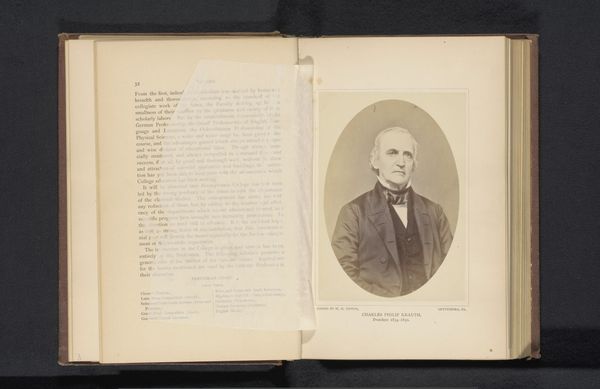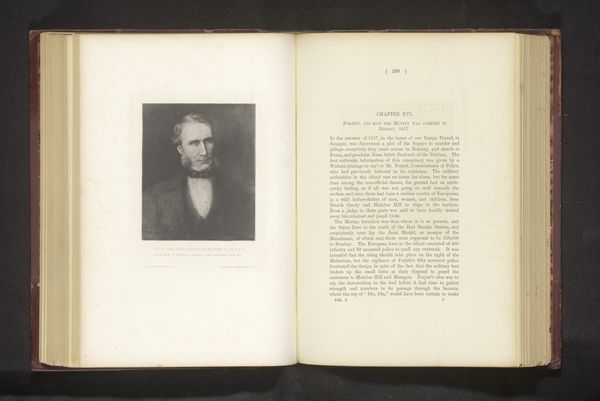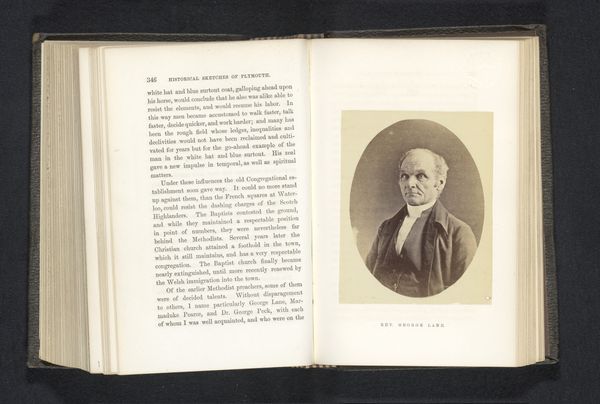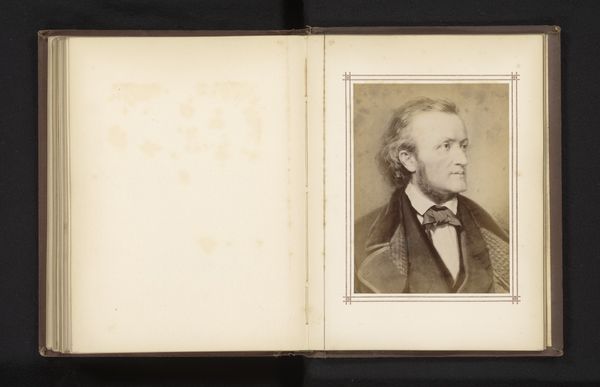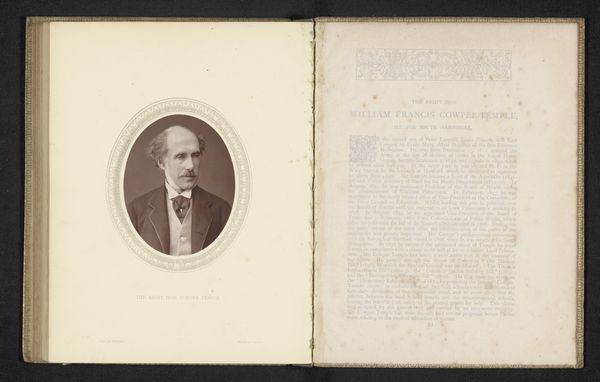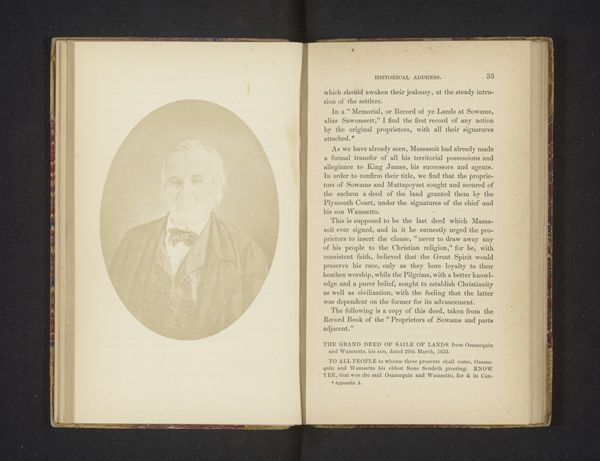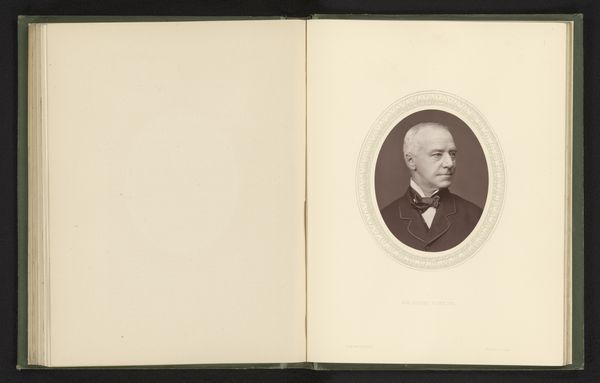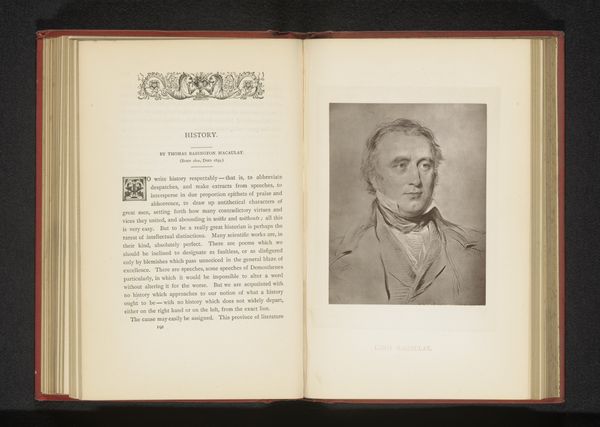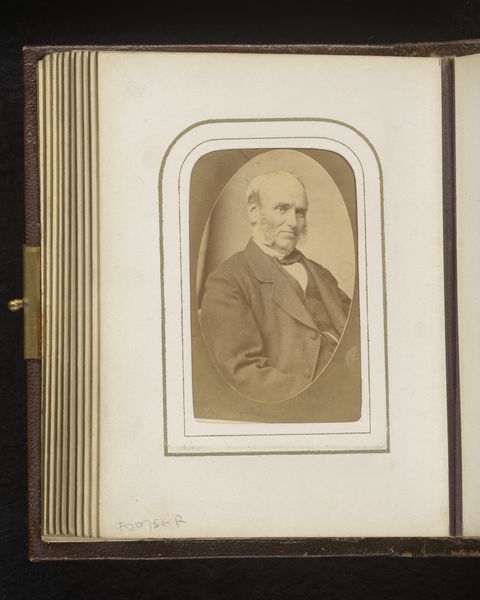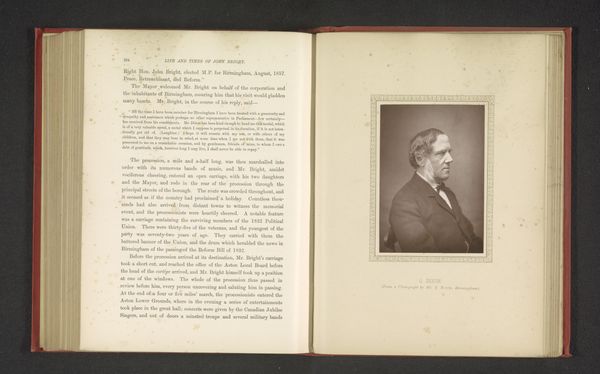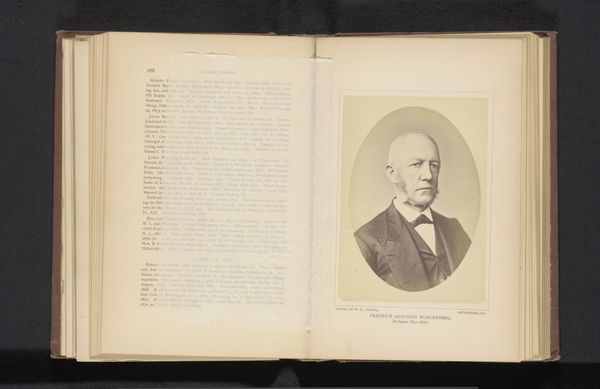
paper, photography, albumen-print
#
portrait
#
paper
#
photography
#
history-painting
#
academic-art
#
albumen-print
Dimensions: height 148 mm, width 103 mm
Copyright: Rijks Museum: Open Domain
Curator: Ah, here we have an albumen print from before 1882, attributed to William H. Tipton: a portrait of Samuel S. Schmucker. Editor: My first thought? A scholar! Something in his bearing…that intensity, pressed and preserved in sepia tones. Curator: The albumen process really does lend that warm, nostalgic air. And indeed, Samuel S. Schmucker was a theologian of some influence. The visual language of portraiture, especially at this time, presents him as a figure of intellect and authority. Notice the formal attire, the stern gaze—all deliberate choices to convey respectability and gravitas. Editor: Absolutely. The open book itself feels symbolic. A visual stand-in, maybe, for knowledge sought, knowledge shared. But there's a tension here. The photograph *is* set within the pages of the open book, but, well…the actual *text* looks so fragile compared to Schmucker’s solid image. Like an anchor grounding the scholarship on the opposite page. Curator: That's a perceptive point. The photograph acts almost like an icon within this historical record. The crispness of the albumen print gives Schmucker a timeless quality in contrast with the yellowing paper surrounding him, marking it firmly of a specific time and space, and therefore a more objective historical object. Editor: Almost like memory, doesn't it? A vivid face emerging from the mists of the past, framed by…well, less distinct details. Like sifting through your family archives. You find an image. And just for a moment, you glimpse a ghost. Curator: Yes, it speaks to how photography began to be intertwined with our cultural obsession of remembering our loved ones or others through a mechanical depiction and physical object to represent it in its fixed form. The printed word aims to recall and describe that same event, but we fixate on the visual artifact and evidence to know it happened, like a truth, versus merely a version in language. Editor: So, in a way, each medium tries to accomplish similar goals—preserving time, fixing experience. It just gets expressed in differing tones, that are anchored in our different associations with the photograph and printed word. Well, food for thought! Curator: Indeed, it prompts consideration about image and cultural memory, each existing on their own symbolic terrain.
Comments
No comments
Be the first to comment and join the conversation on the ultimate creative platform.
